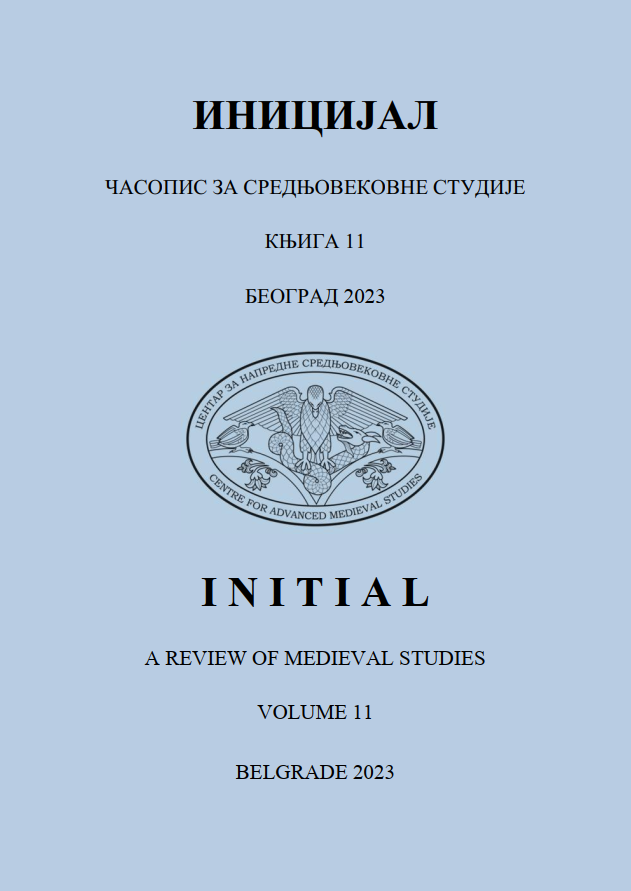ЧИН ТОПЛОТЕ (ΖΕΟΝ) У ВИЗАНТИЈСКОМ ЛИТУРГИЈСКОМ ТИПУ. КА ПОТПУНИЈЕМ ОБЈАШЊЕЊУ ПОРЕКЛА И ТЕОЛОШКО-ЛИТУРГИЈСКОГ СМИСЛА
THE ΖΕΟΝ RITE IN BYZANTINE LITURGICAL TYPE. TOWARDS A FULL EXPLANATION OF ITS ORIGIN AND THEOLOGICAL AND LITURGICAL MEANING
Author(s): Srboljub UbiparipovićSubject(s): Christian Theology and Religion, Theology and Religion, Eastern Orthodoxy
Published by: Центар за напредне средњовековне студије
Keywords: water; Eucharist; zeon; Communion; Eastern Orthodox Church
Summary/Abstract: It is well-known that the Byzantine liturgical type has one specific rite called the zeon, which implies a second infusion of water into the chalice after the consecration of the Holy Eucharistic gifts. According to this rite, just before communion boiling water is poured into the consecrated chalice by the Eastern Orthodox deacon or priest. A thorough analysis of this sacred act was performed by Robert Taft (1932‒2018), who stated that simultaneous appearance in the 11th century of the zeon rite, its symbolic and theological explanation in the commentators of Byzantine liturgical type, and the liturgical formulas expressing this symbolism, point to the origins of zeon rite in the 11th century. Above all, Taft believed that Nicholas Cabasilas’ zeon mystagogy (14th century) had resolved the problem of its theological understanding. However, our approach to the question of recognizing the exact period of institution of the zeon rite was based first of all on the arguments of Iconoclasts concerning their explanation of Divine Eucharist. They thought that the Holy Bread and the Holy Chalice after the consecration are just the icons of Christ. Exactly this point of view caused – according to our opinion – the introduction of the zeon rite in Constantinople, probably during the 10th century. The first evidence for this hypothesis is the liturgical manuscript Dresden Praxapostol A 104 (first half of the 11th century), where the zeon rite is mentioned under another word, τὸ θερμόν (to thermon), in the last group of rubrics for the Liturgy of Presanctified Gifts. Other authors from the 11th century, a monk and priest from the Constantinopolitan monastery of Studios, Nicetas Stethatos, and the liturgical commentary The Protheoria: Or, Summary Commentary Concerning the Symbols and Mysteries Occurring in the Divine Liturgy (the second half of the 11th century) testify about thezeon rite as an established sacred practice in the Eastern Orthodox Church. The aim of the zeon rite is very clear. Since the warm water represents the image of life on account of the heat, it is added at the moment of communion, so that touching the lips to the chalice and receiving the blood in communion, the Eastern Orthodox Christians are confident that they are drinking from Christ’s vivifying breast, with the feel of the heat typifying that divinity has not been taken away. The place where the zeon rite was introduced was most likely the Church of Divine Wisdom (St. Sofia) in Constantinople, which even had a Holy Oven (ὁ ἅγιος φοῦρνος – ho agios fournos) in its sacristy (to skevofilakion), where boiling water could be prepared. Finally, such a unique element of Byzantine liturgical type has remained until today the indispensable sacred sign of theological and liturgical tradition of the Eastern Orthodox Church.
Journal: Иницијал. Часопис за средњовековне студије
- Issue Year: 2023
- Issue No: 11
- Page Range: 55-70
- Page Count: 16
- Language: Serbian

